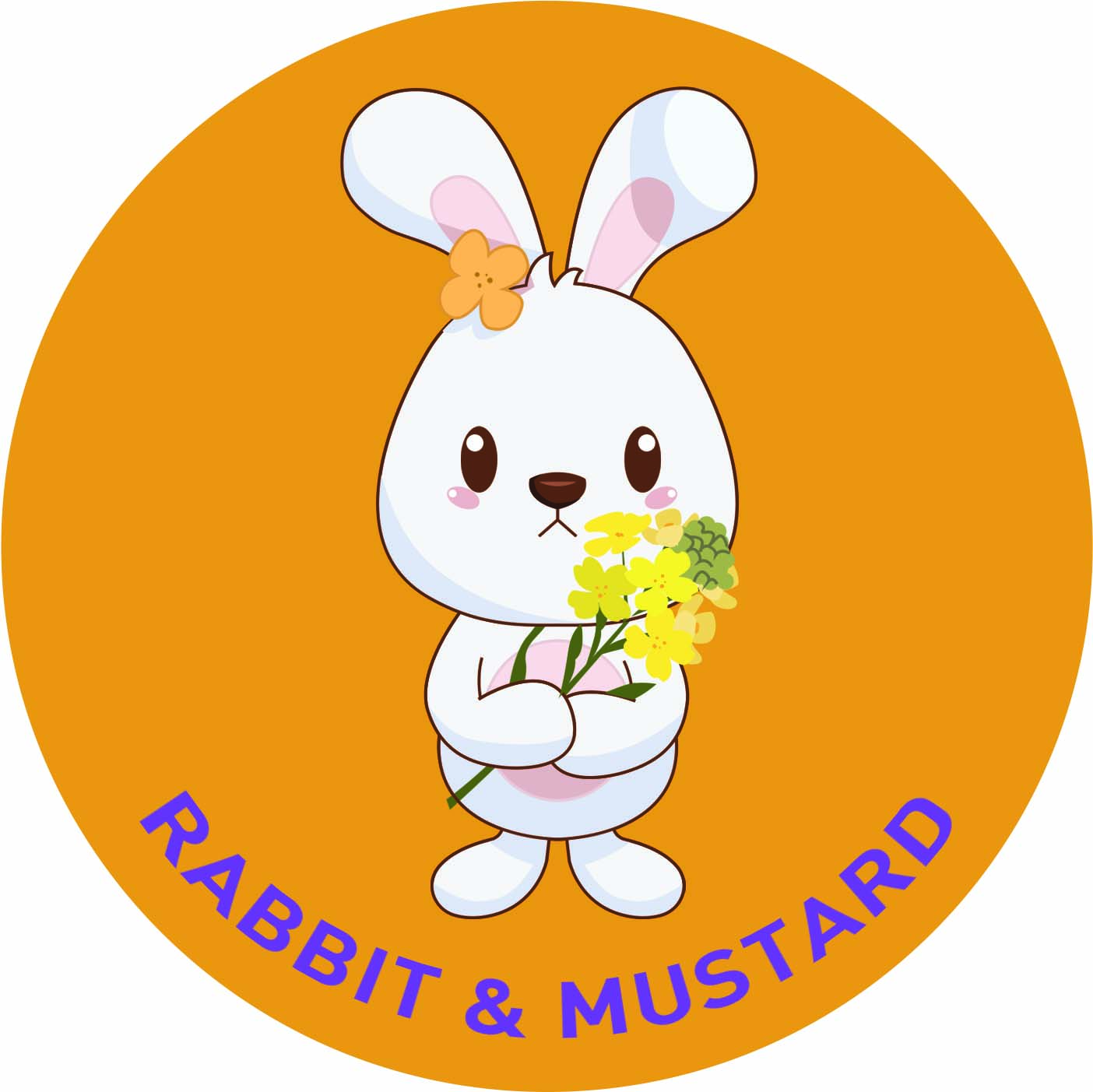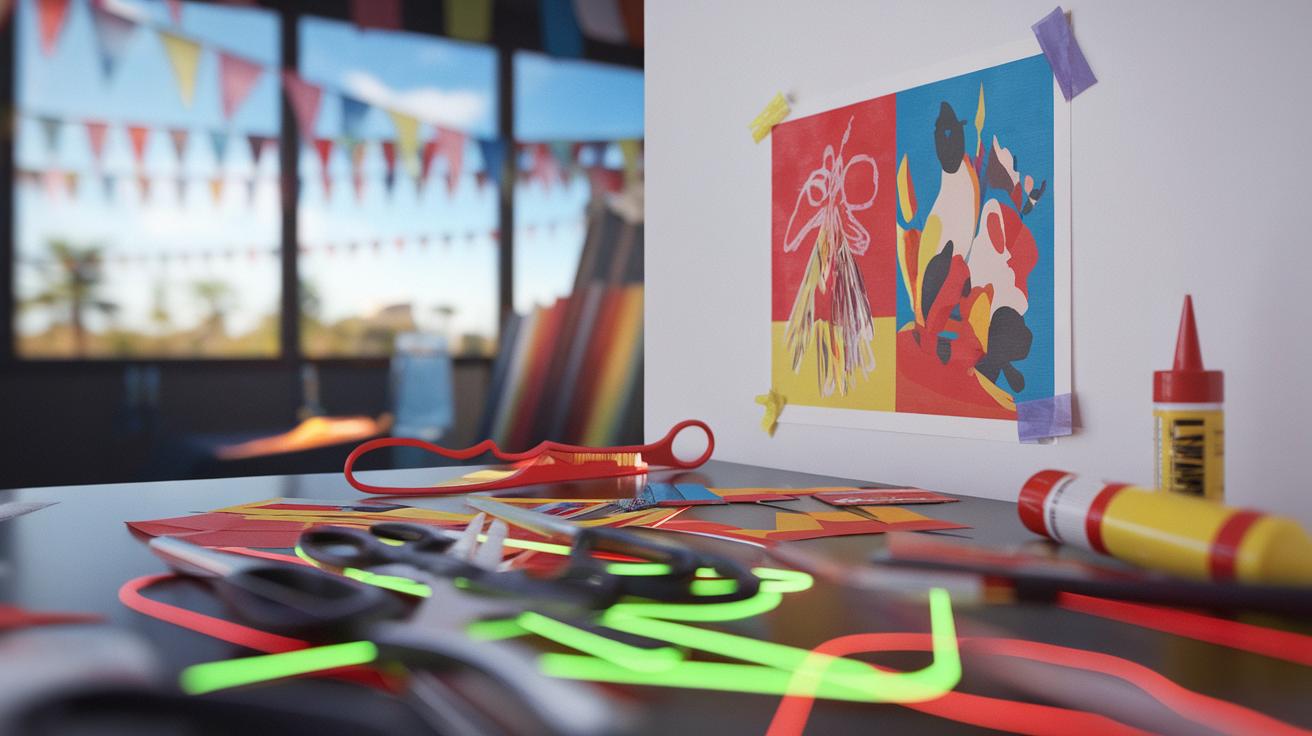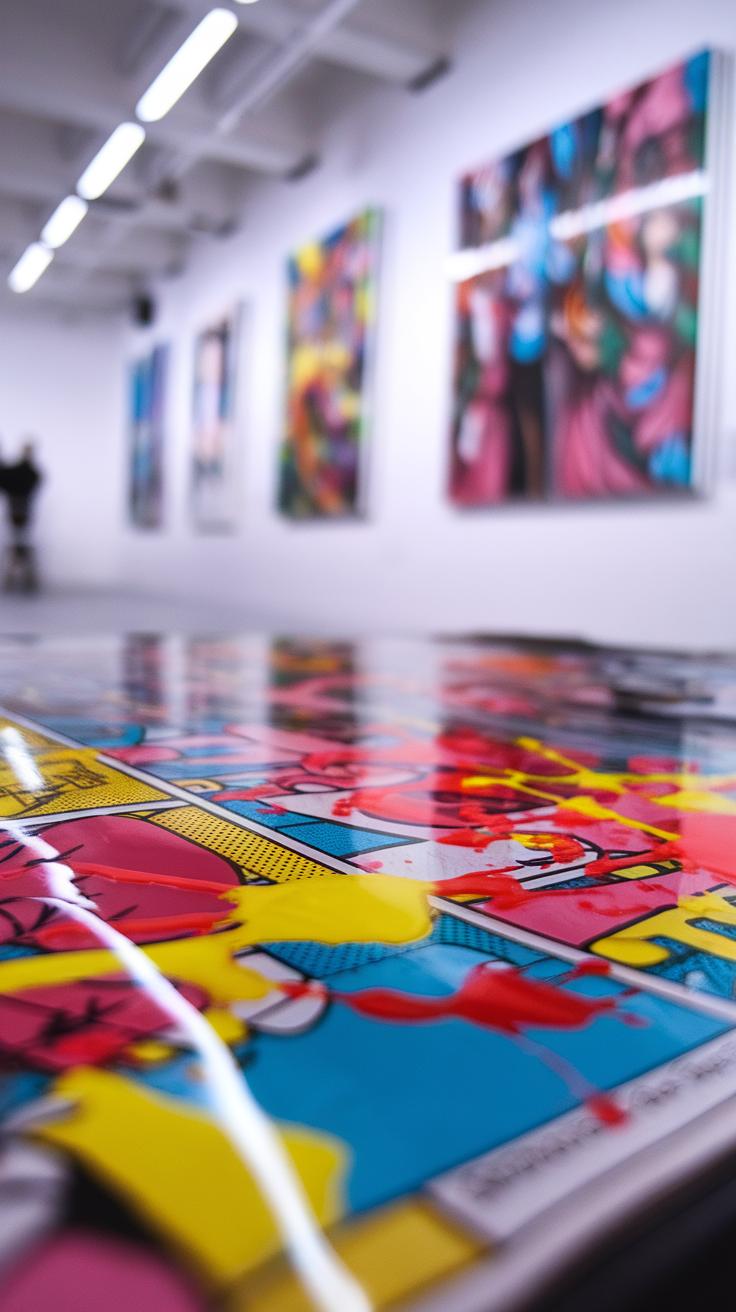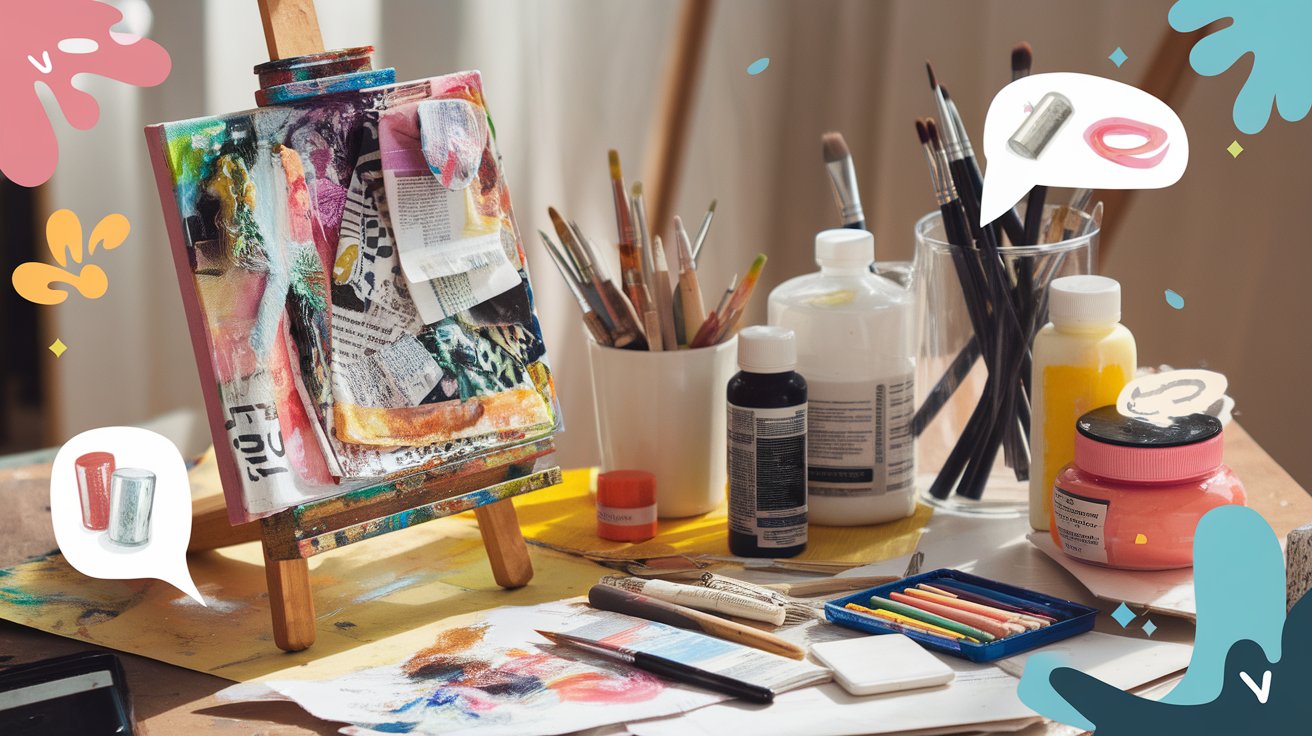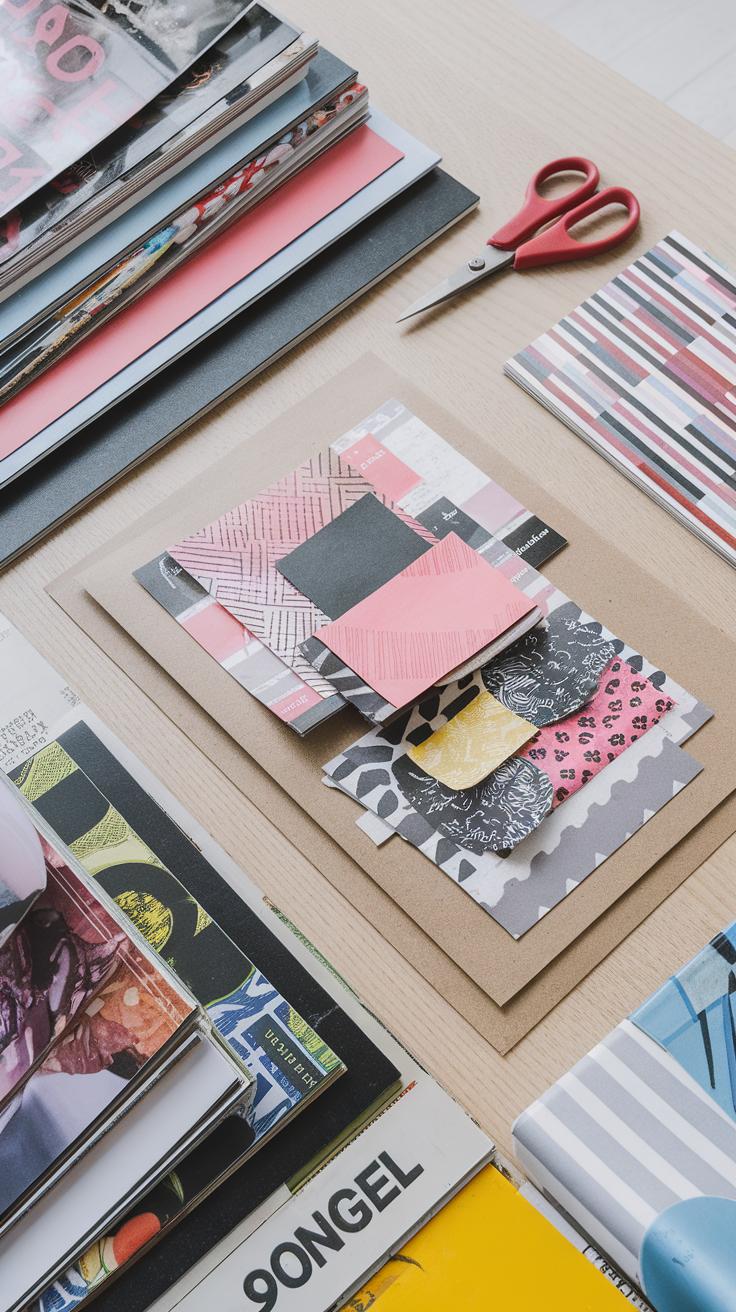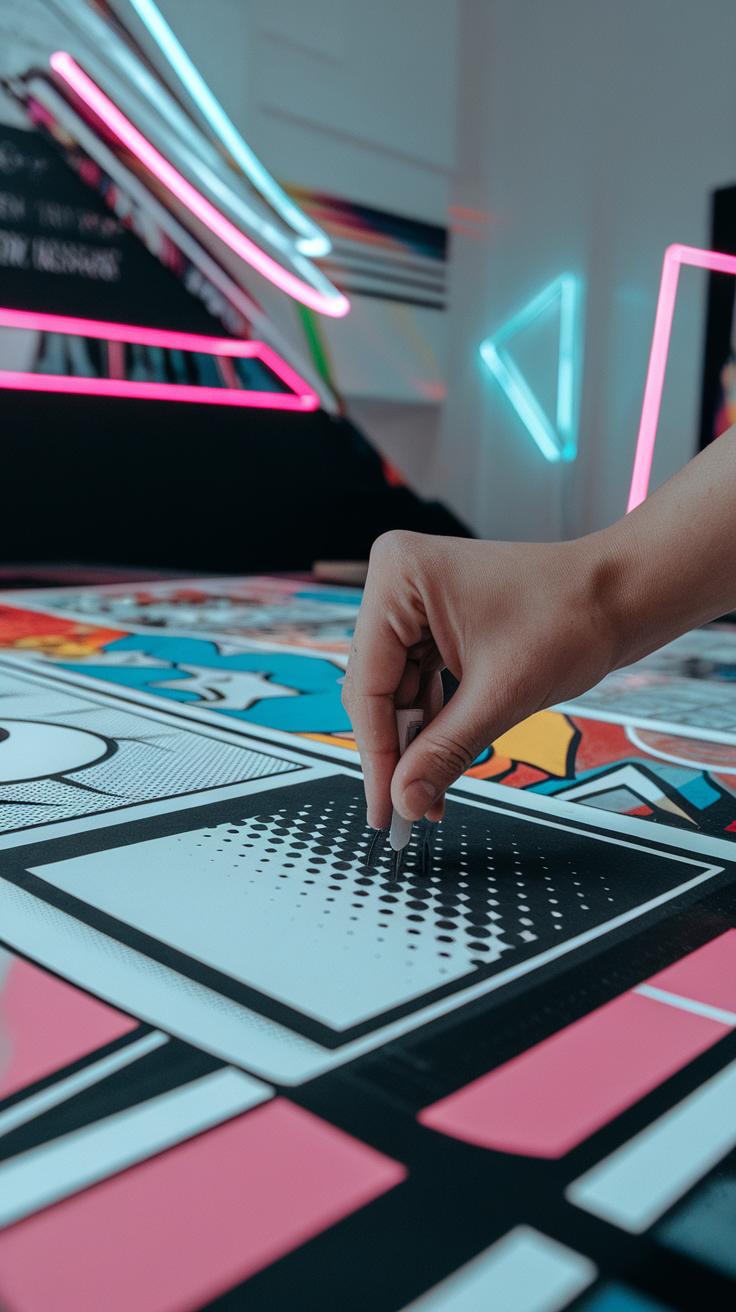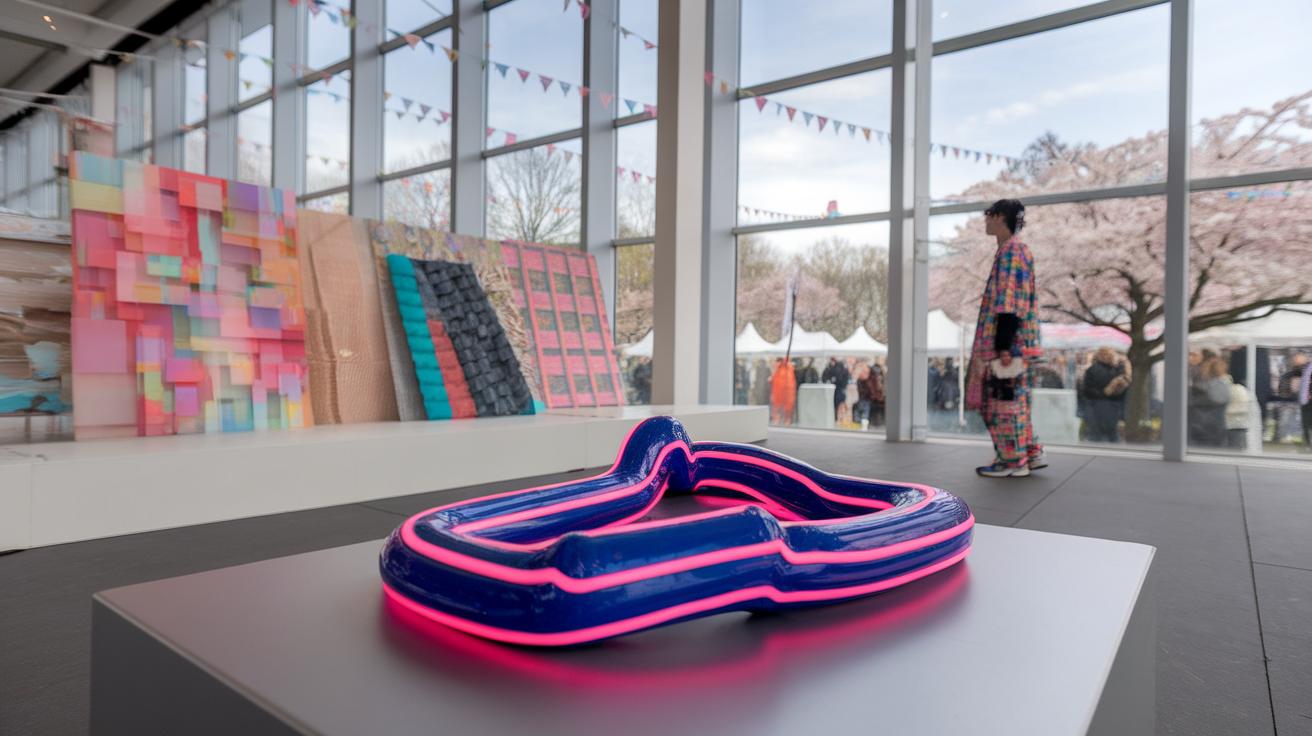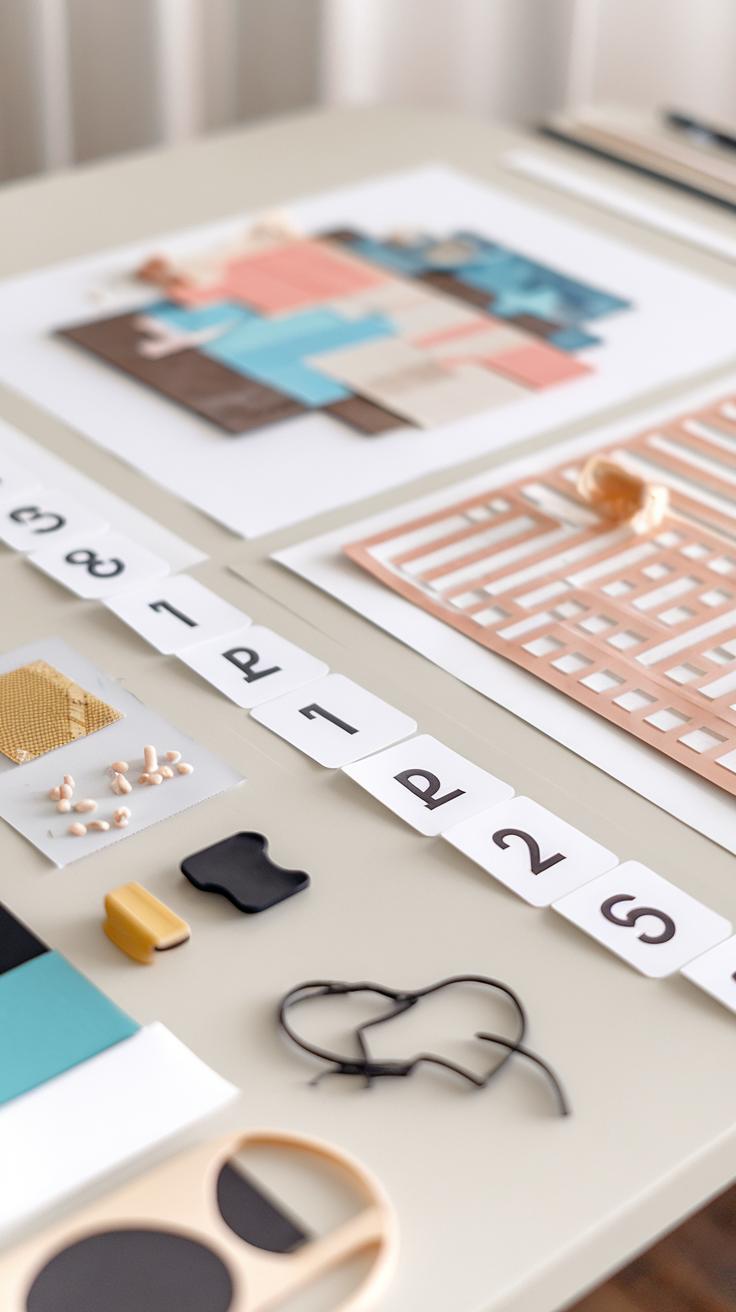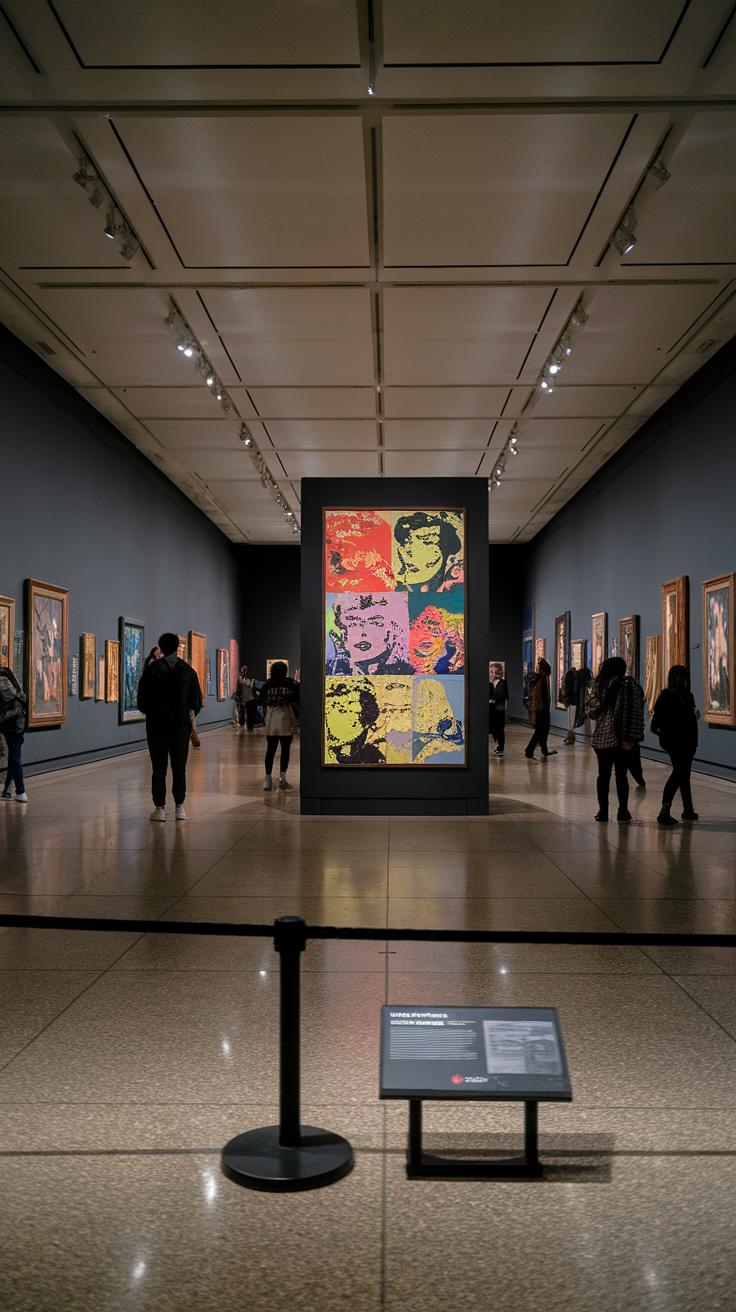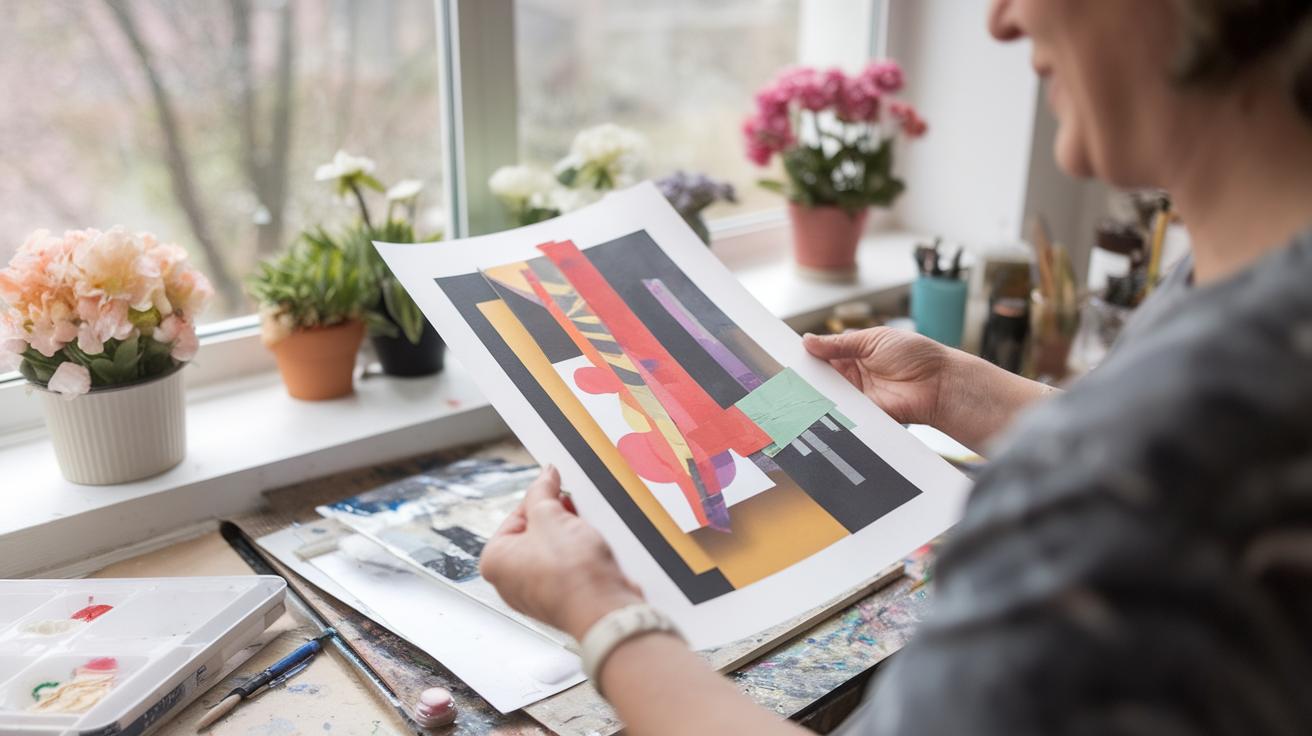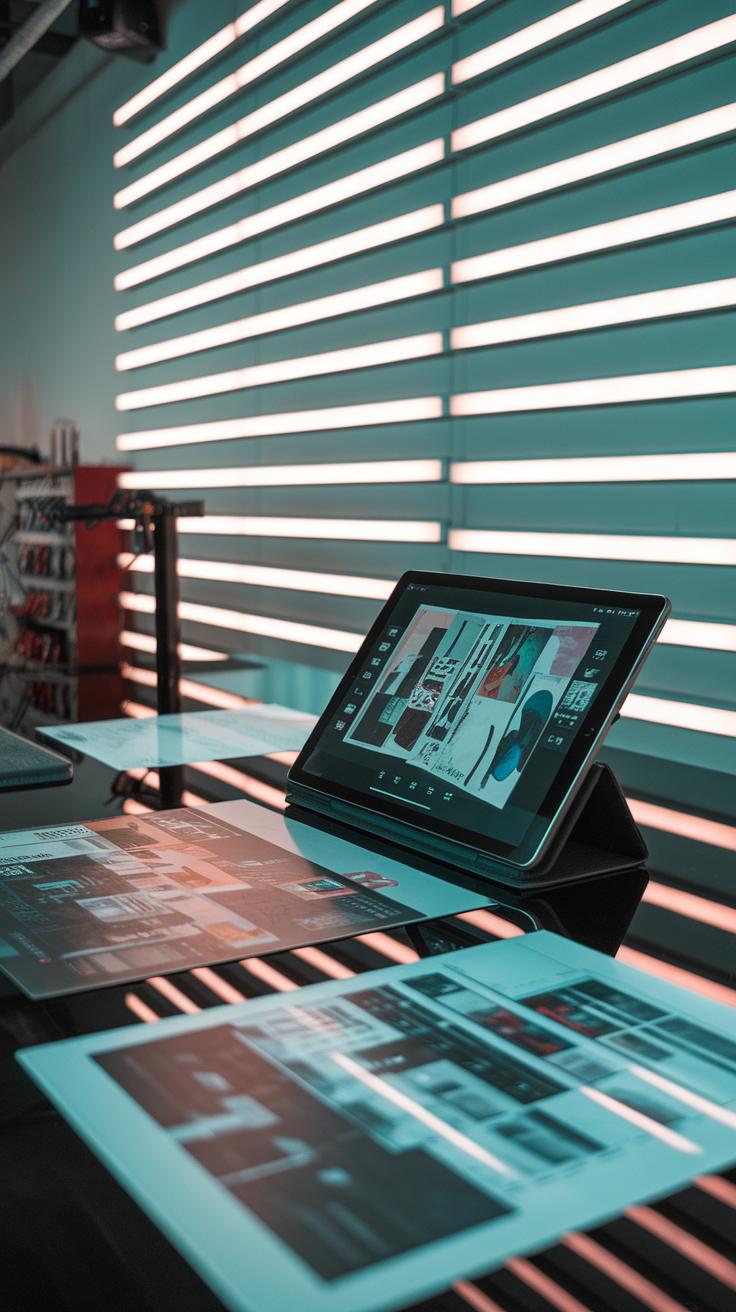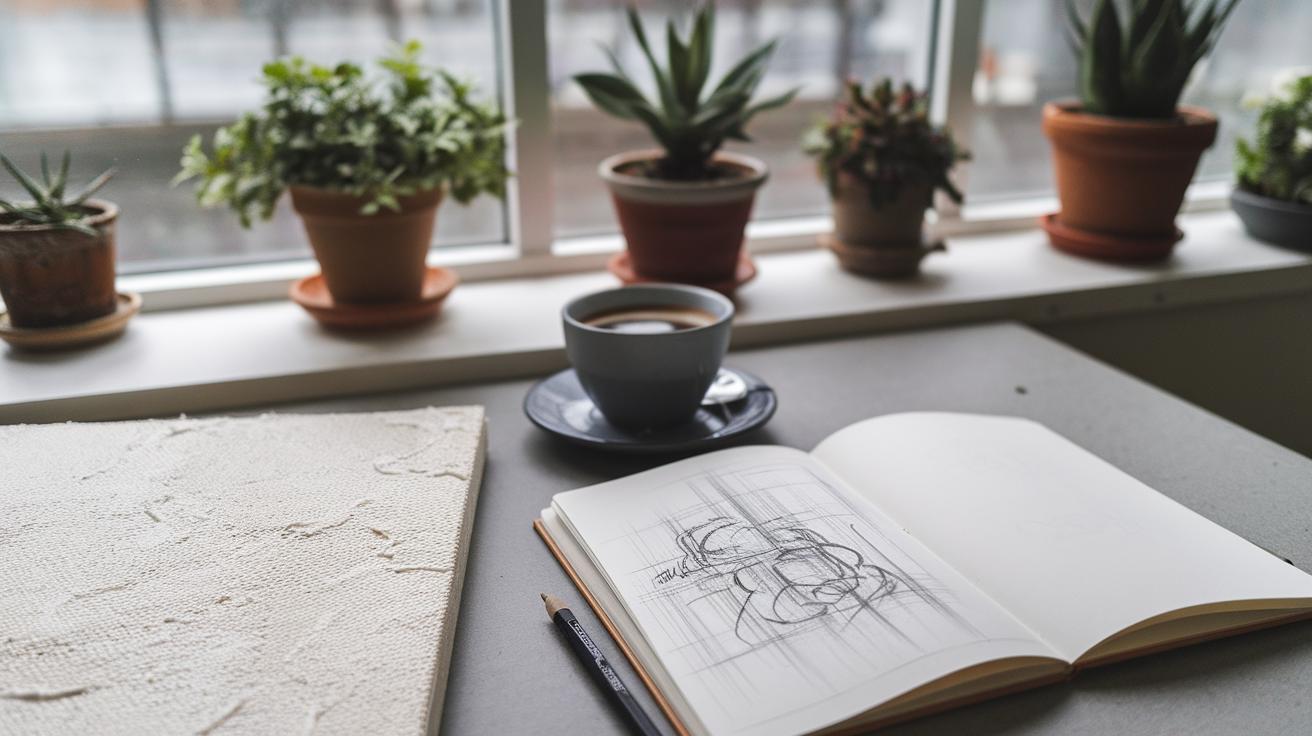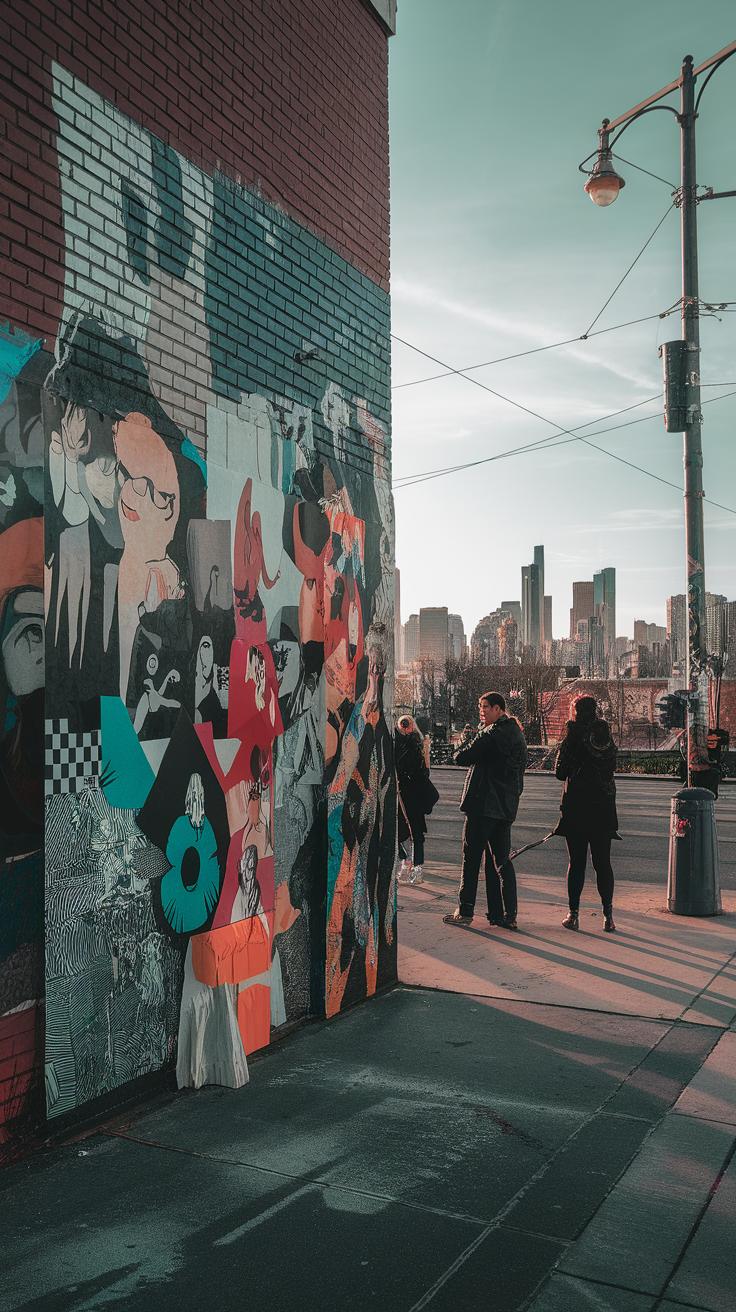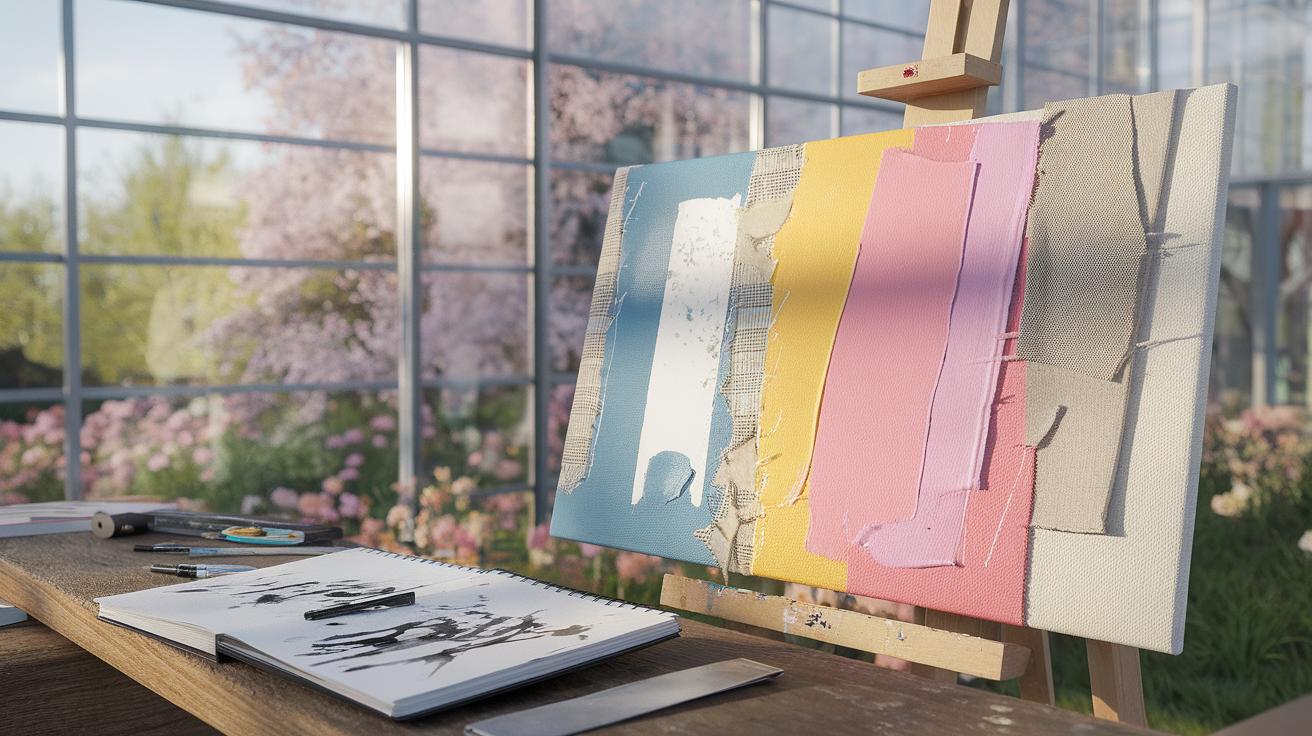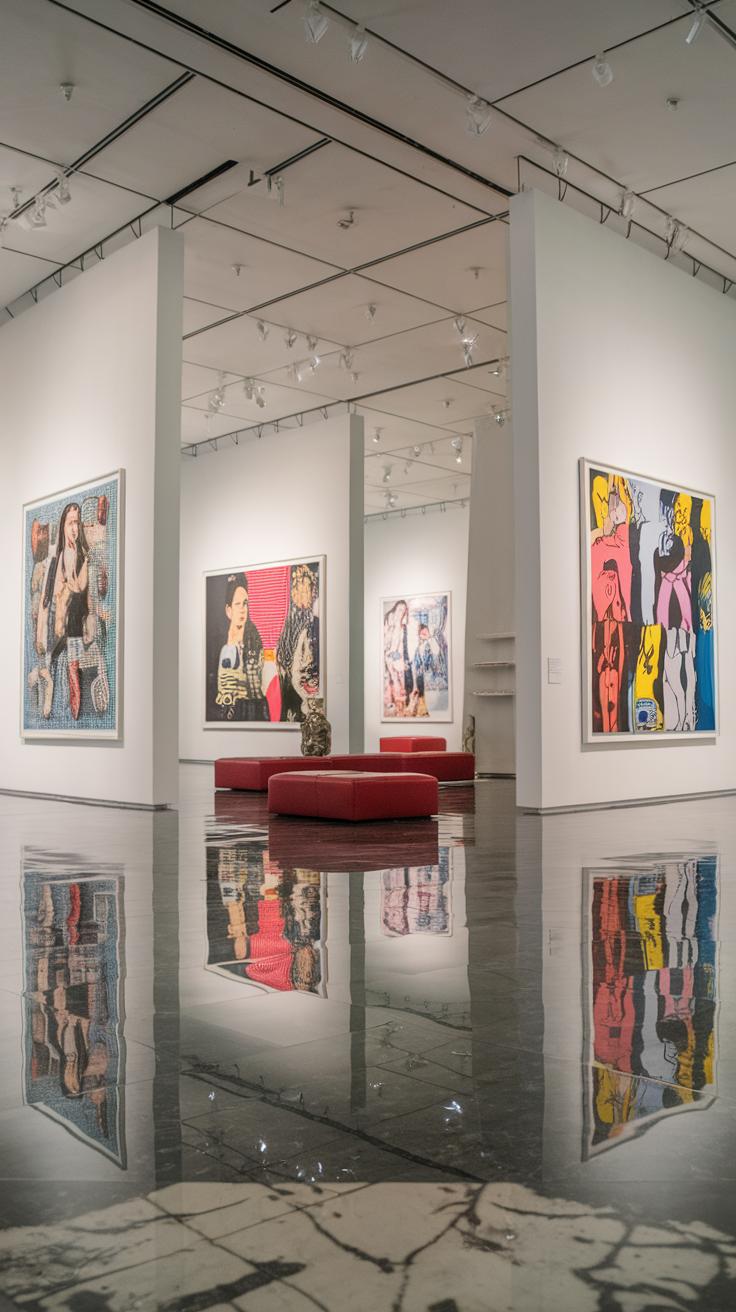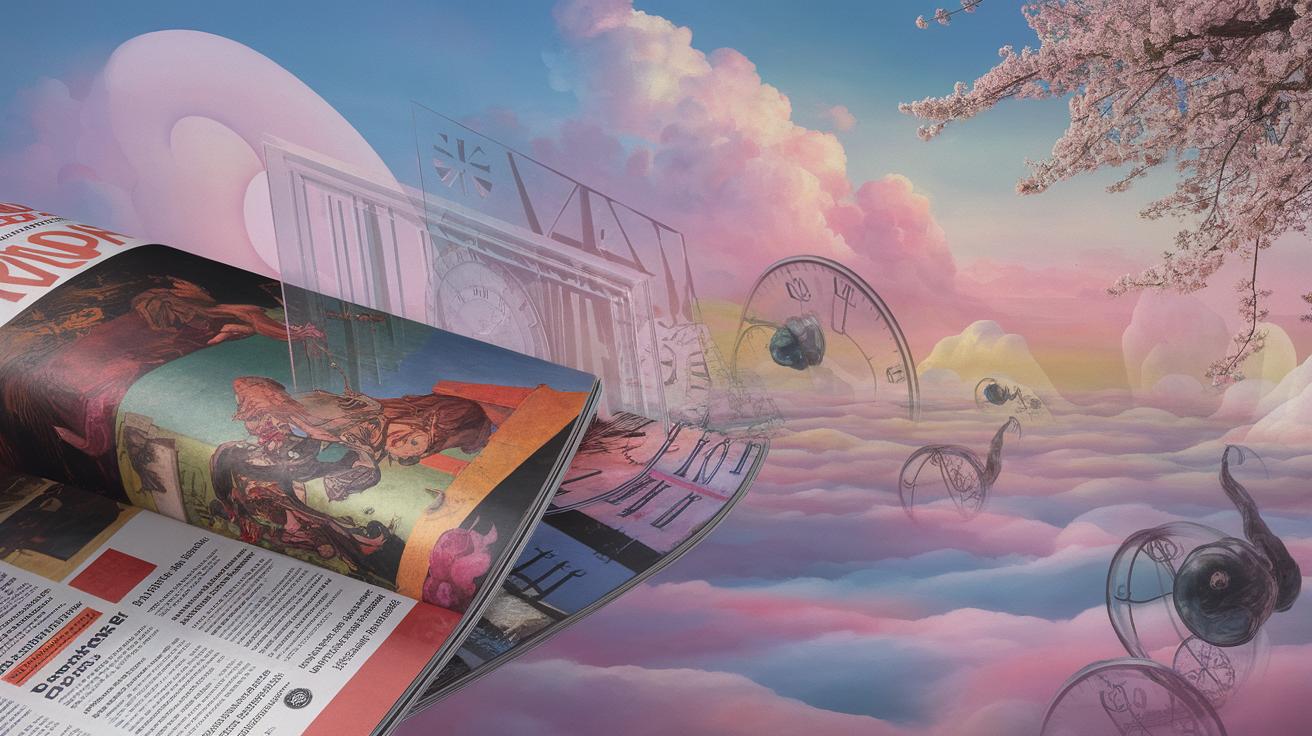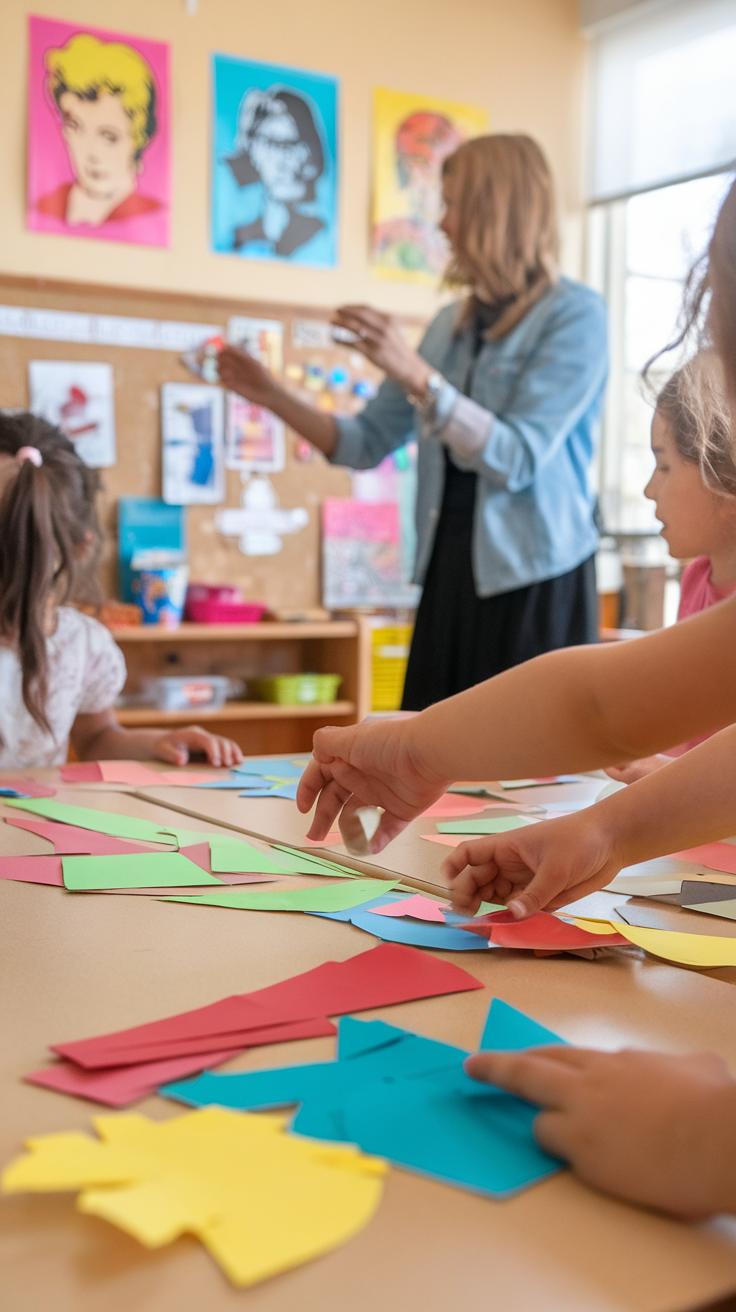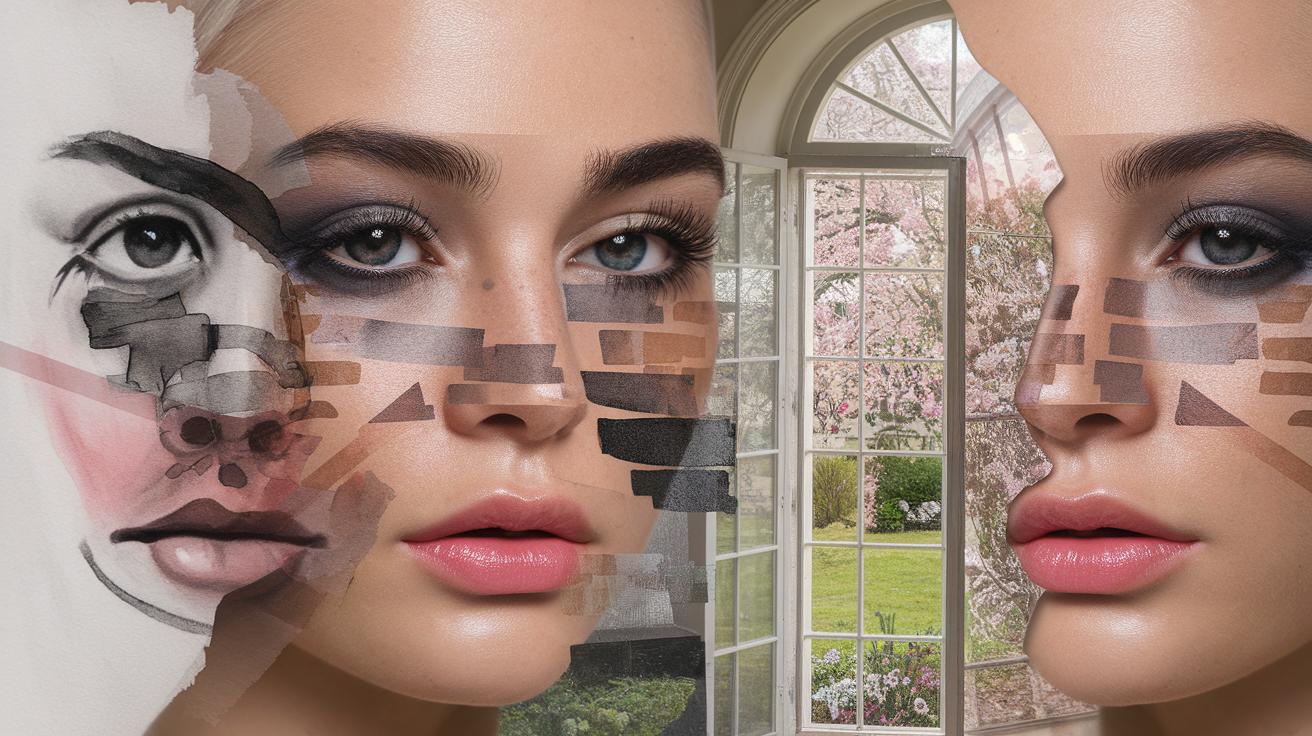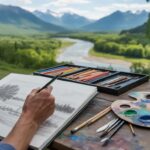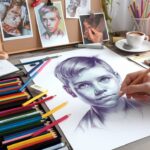Introduction
Pop art collage represents a dynamic blend of various artistic elements, merging images from popular culture with traditional art techniques. This vibrant form of expression gained traction in the mid-20th century, becoming a significant movement in both the United States and the United Kingdom. Collages often showcase familiar items like advertisements and comic book visuals, which resonate with the viewer’s everyday experiences. This art form allows artists to comment on consumerism, identity, and cultural contradictions while engaging the audience in visual storytelling.
The collaging technique builds on the rich history of modern art, echoing traditions from earlier practices. Artists like Picasso and Braque pioneered collage by integrating materials into their paintings. Today, pop art collage continues to captivate, inviting artists and audiences alike to rethink the boundaries of art. With various techniques and styles available, pop art collages can serve as unique creations that leave a lasting impression.
Understanding Pop Art
Pop art emerged in the mid-20th century as a vibrant art movement that shifted the focus of art to everyday culture. It drew inspiration from advertisements, comic books, and popular media. Artists like Andy Warhol and Roy Lichtenstein became icons, using bold colors and simple forms to challenge traditional art norms.
One of the movement’s main characteristics is its use of recognizable imagery from mass culture. Warhol’s Campbell’s Soup cans and Lichtenstein’s comic strips illustrate this clearly. They transformed mundane objects into art, making a statement about consumerism.
This movement stood apart from previous art styles, such as Abstract Expressionism, which emphasized emotion and individuality. Pop art embraced a collective experience, engaging viewers with familiar symbols. How do you relate to images in your everyday life? Pop art encourages you to see art in everything around you.
The Art of Collage
Collage is a technique where artists combine different materials onto a single surface. These materials can include paper, photographs, fabric, and more. Originating in the early 20th century, collage became a significant method in modern art. Artists like Pablo Picasso and Georges Braque pioneered this technique. They sought new ways to express reality, challenging traditional perspectives.
There is a clear difference between collage and assemblage. While collage focuses on flat surfaces, assemblage brings three-dimensional elements into play. With assemblage, found objects join other materials to create a cohesive piece. Other mixed media forms blend collage and assemblage, adding paint, drawing, or digital elements. Have you ever thought about how these techniques could transform your own artwork? Experimenting with collage encourages individual expression and sparks creativity.
Elements of Pop Art Collage Key Aspects for Vibrant Visual Impact
Color
Color stands as a primary element in pop art collage. Bright, bold colors draw attention and create energy. You can experiment with contrasts, using complementary colors to make images stand out. Think about artists like Roy Lichtenstein, who used vivid primary colors to create striking visuals. What colors resonate with you? Consider how they influence the mood of your work.
Imagery
The choice of imagery significantly impacts the overall design. Everyday objects, celebrities, or advertisements can add familiarity. These items speak to popular culture and invite viewers to connect. For instance, Andy Warhol’s use of soup cans transformed common products into art. What images could you incorporate into your collages to reflect your interests?
Texture
Texture adds depth and visual interest. Mixing materials like paper, fabric, and photography creates layers. This technique can enhance the tactile quality of your collage. You might include magazine cutouts alongside painted elements for contrast. How will different textures contribute to your visual story?
By focusing on color, imagery, and texture, you can create pop art collages that captivate and engage your audience. Each element plays a vital role in forming unique and vibrant designs.
Creating Your Own Pop Art Collage A StepbyStep Guide
Making a pop art collage can be exciting and fulfilling. Start by gathering materials. You’ll need magazines, colored paper, glue, scissors, and a canvas or sturdy paper as your base. Consider using digital tools if you want to create a collage online.
Choosing a theme is crucial. Think about what matters to you. Do you enjoy pop culture, social issues, or personal memories? A clear theme helps convey your message. Use bold colors and striking images to capture attention. Think of icons like celebrities or everyday objects.
Begin by cutting out images and arranging them on your base. Experiment with positioning and layering. This step is all about creativity. Try overlapping elements for depth. Once satisfied, glue everything down. Remember, it’s your expression. Feel free to add unique textures like fabric or paint for additional effects.
Take a moment to reflect on your design. Does it communicate your message? Make adjustments if needed. Share your work with friends and ask for their thoughts. Their feedback can provide valuable insights and inspire your future projects.
Famous Pop Art Collages The Icons of Visual Impact
Celebrated Artists and Their Works
Pop art collages have revolutionized visual culture. One notable example is Robert Rauschenberg’s “Erased de Kooning Drawing.” Rauschenberg challenged traditional notions by erasing a work by artist Willem de Kooning. This act sparked discussions about authorship and artistic value.
Another influential piece is Richard Hamilton’s “Just What Is It That Makes Today’s Homes So Different, So Appealing?” This collage captures consumer culture by blending images of household items and popular figures. Its bold colors and unexpected juxtapositions provoke questions about materialism.
Andy Warhol’s “Marilyn Diptych” stands out for its repetitive imagery of Marilyn Monroe. Warhol explored fame and its fleeting nature. The stark contrasts in colors also highlight how celebrity culture saturates society.
Lastly, Claes Oldenburg’s “Floor Burger” combines food with humor in a large-scale collage. Oldenburg questioned the line between art and everyday objects. His work invites viewers to reflect on their relationship with consumer items.
What can you learn from these iconic pieces? How do they inspire your own pop art collage creations? Think about the themes and impacts of these collages as you consider your artistic choices.
The Impact of Technology in Pop Art Collage
Digital technology shapes how artists create pop art collages. This shift allows you to combine images, colors, and textures in ways that were once impossible.
Many contemporary artists use software like Adobe Photoshop and Illustrator. These tools provide features for layering, masking, and blending images. You can play with colors and styles until you find the perfect combination.
Some artists prefer apps like Procreate or Clip Studio Paint for their ease of use on tablets. They create intricate designs on the go, turning everyday moments into art.
Think about how these tools change your art practice. Have you experimented with digital techniques? Printing and scanning can also add depth. Artists often take traditional techniques online and mix them with digital methods.
Technology lets you connect with audiences globally. You can share your work immediately on social media, allowing for instant feedback. How do you think this interaction impacts your creative process?
Pop Art Collage in Contemporary Culture
Pop art collage plays a significant role in reflecting today’s cultural issues. Artists use this medium to comment on social narratives, making complex topics more accessible. The vibrant colors and layered images grab attention and provoke thought. You might wonder how this art form connects with contemporary themes like consumerism, identity, and technology.
Artists like Barbara Kruger and Amy Sarkisian challenge stereotypes and societal norms through their collages. They often combine text with imagery to create strong messages. This approach can engage viewers and encourage them to reflect on their own experiences. Have you ever seen a piece that made you think about your role in society?
Collage offers a way to juxtapose different perspectives. This method reveals hidden truths about consumer culture. You can see how artists layer images to critique advertisements or the influence of social media. These collages invite you to question what you consume and how it shapes your identity.
As you explore pop art collage, consider how this art form speaks to your experiences. It transforms everyday elements into compelling narratives, helping you connect with broader cultural conversations. Each piece is a reminder that art can be a powerful tool for social change.
Visiting Museums and Galleries Pop Art Collages for Vibrant Visual Impact
Many museums and galleries showcase pop art collages. These exhibits provide a unique view of how artists blend color and form. Consider visiting The Museum of Modern Art in New York City. They frequently feature pop art works, allowing you to see pieces from renowned artists like Andy Warhol and Roy Lichtenstein. The Tate Modern in London is another excellent option. They house a range of contemporary collages that highlight the evolution of pop art.
When you visit, spend time studying each piece. Look for the details. Notice how different elements come together to create impact. Take notes on your thoughts or feelings. This reflection can deepen your understanding. Don’t hesitate to ask museum staff about specific works. Engaging with guides can enhance your experience. Consider visiting during off-peak hours to enjoy a quieter atmosphere.
Have you ever thought about how the setting affects your perception of art? Exploring pop art collages in varied settings can shift your perspective. Look for local galleries as well. They often host emerging artists. This exposure can inspire.”
Encouraging Young Artists Cultivating an Interest in Pop Art Collage
Young artists can find joy in pop art collage. Start by introducing them to the basics of color theory and composition. Use vibrant colors to inspire creativity. Show examples of famous pop artists like Andy Warhol and Roy Lichtenstein to spark interest.
Creating hands-on activities will further engage them. Organize collage workshops where they can cut, paste, and arrange mixed media pieces. Provide magazines, newspapers, and fabric scraps for materials. Encourage them to explore personal themes in their collages.
Online resources can enhance their learning. Websites like Khan Academy and YouTube have excellent tutorials. Challenge them to share their work on social media, building confidence through feedback.
Ask them questions about their creative process. What does their artwork say about them? How do the colors they choose reflect their emotions? These conversations will deepen their understanding and love for the art form.
Conclusions
Pop art collage offers a unique and engaging way to appreciate the fusion of culture and creativity. By using familiar media, artists breathe new life into objects that might otherwise go unnoticed. The result is a colorful tapestry that not only entertains but also invites reflection on modern society and consumer habits. Artists harness this medium to challenge perceptions, utilizing irony and humor to transcend traditional boundaries.
As you explore the world of pop art collage, consider creating your own. Start by gathering various materials that inspire you, such as magazine clippings or personal photographs. This practice encourages you to engage with your surroundings visually. No matter your artistic background, experimenting with pop art collage can enable personal expression and inspire others with unexpected visual journeys.
